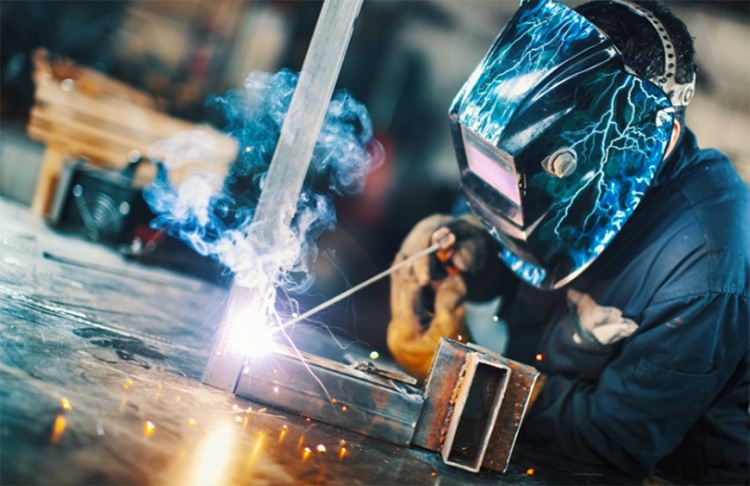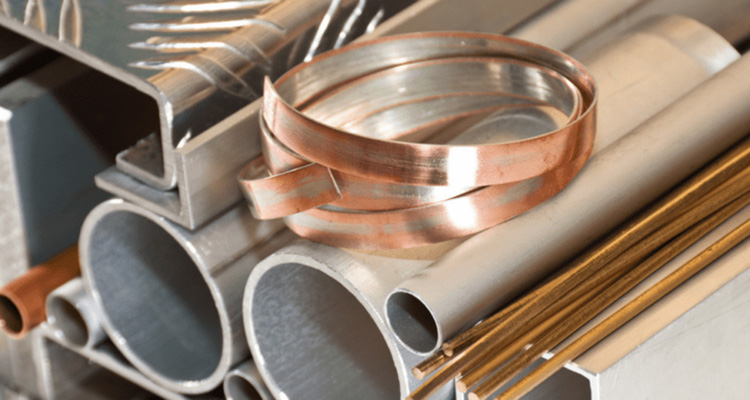Harmful factors of welding materials
(1) The main research object of welding labor hygiene is fusion welding, and among them, the labor hygiene problems of open arc welding are the biggest, and the problems of submerged arc welding and electroslag welding are the least.
(2) The main harmful factors of covered electrode manual arc welding, carbon arc gouging and CO2 gas shielded welding are the fume and dust generated during the welding process – welding fume. Especially electrode manual arc welding. And carbon arc gouging, if the welding operation is performed in a narrow working space environment (boiler, cabin, airtight container and pipeline, etc.) for a long time, and in the case of poor sanitation protection, it will cause harm to the respiratory system, etc. suffering from welding pneumoconiosis.
(3) Toxic gas is a major harmful factor of gas electric welding and plasma arc welding, and when the concentration is relatively high, it will cause poisoning symptoms. In particular, ozone and nitrogen oxides are produced by arc high temperature radiation acting on oxygen and nitrogen in the air.
(4) Arc radiation is a common harmful factor for all open arc welding, and the electro-optic eye disease caused by it is a special occupational disease of open arc welding. Arc radiation can also damage the skin, causing welders to suffer from skin diseases such as dermatitis, erythema and small blisters. In addition, cotton fibers are damaged.
(5) Tungsten argon arc welding and plasma arc welding, because the welding machine is equipped with a high-frequency oscillator to help start the arc, there are harmful factors – high-frequency electromagnetic field, especially the welding machine with a long working time of the high-frequency oscillator (such as Some factory-made argon arc welding machines). High-frequency electromagnetic fields can cause welders to suffer from diseases of the nervous system and blood system.
Due to the use of thoriated tungsten rod electrodes, thorium is a radioactive substance, so there are harmful factors of radiation (α, β and γ rays), and it may cause radioactive hazards around the grinder where the thoriated tungsten rod is stored and sharpened.
(6) During plasma arc welding, spraying and cutting, strong noise will be generated, which will damage the welder’s auditory nerve if the protection is not good.
(7) The main harmful factors during gas welding of non-ferrous metals are the oxide dust formed by the evaporation of molten metal in the air, and the toxic gas from the flux.
Precautions for using welding materials
1. There are usually two types of stainless steel electrodes: titanium-calcium type and low-hydrogen type. The welding current adopts DC power supply as much as possible, which is beneficial to overcome the redness and shallow penetration of the welding rod. Electrodes with titanium-calcium coating are not suitable for all-position welding, but only for flat welding and flat fillet welding; electrodes with low-hydrogen coating can be used for all-position welding.
2. Stainless steel electrodes should be kept dry during use. In order to prevent defects such as cracks, pits, and pores, the titanium-calcium type coating is dried at 150-250 °C for 1 hour before welding, and the low-hydrogen type coating is dried at 200-300 °C for 1 hour before welding. Do not dry repeatedly, otherwise the skin will fall off easily.
3. Clean up the welding joint, and prevent the welding rod from being stained with oil and other dirt, so as not to increase the carbon content of the weld and affect the welding quality.
4. In order to prevent intergranular corrosion caused by heating, the welding current should not be too large, generally about 20% lower than that of carbon steel electrodes, the arc should not be too long, and the interlayers are cooled quickly.
5. Pay attention when starting the arc, do not start the arc at the non-welding part, it is better to use the arc starting plate of the same material as the weldment to start the arc.
6. Short-arc welding should be used as much as possible. The arc length is generally 2-3mm. If the arc is too long, thermal cracks will easily occur.
7. Transport strip: short-arc fast welding should be adopted, and lateral swing is generally not allowed. The purpose is to reduce the heat and heat-affected zone width, improve the weld resistance to intergranular corrosion and reduce the tendency of thermal cracks.
8. Welding of dissimilar steels should carefully select welding rods to prevent thermal cracks from improper selection of welding rods or the precipitation of σ phase after high-temperature heat treatment, which will make the metal embrittled. Refer to the welding rod selection standards for stainless steel and dissimilar steel for selection, and adopt appropriate welding processes.
In terms of the general trend, the future development of jointing material products will gradually upgrade. In the future, manual products will be gradually replaced by high-efficiency and high-quality products with a high degree of automation. Structure, different welding technical requirements under different service conditions.
Post time: Jun-05-2023


